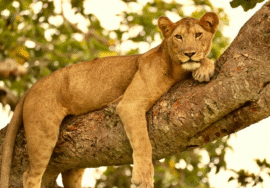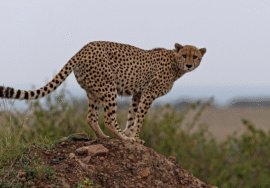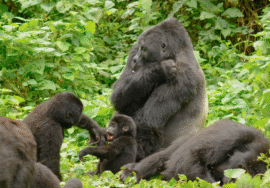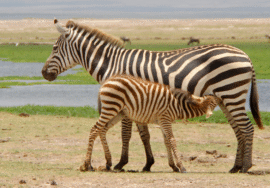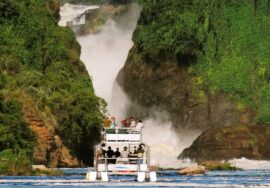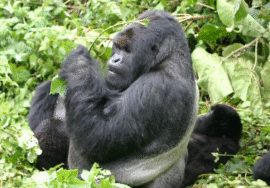Nairobi National Park
Nairobi National Park
Nairobi National Park is Kenya’s oldest national park, established in 1946 and history this was Kenya’s first national park. It’s unique for being the only game reserve in the world located in the capital city approximately 7km south of the city center. The Park covers an area of 117km2 thus making it the smallest game park in Kenya. In addition, it joins to a conservation corridor for the Athi-Kapiti plains towards the south of the park making is such a draw for wildlife. Furthermore, the park includes a rhinoceros sanctuary, which was originally set up in 1963, which has become one of the most successful in Kenya. Nairobi National Park is, therefore, one of the only places where visitors have an almost certain chance of seeing black rhinoceros in their natural habitat. This Park is dominated and surrounded by savanna grasslands, open plains, riverine ecosystems, forested areas, thick woods, man-made dams, and acacia. Nairobi National Park is undoubtedly one of Kenya’s most accessible and popular national parks to visit, with only a fence separating the park’s prolific wildlife from the metropolis. Despite being relatively smaller than some of Kenya’s other sought-after and sizeable, the Park boasts a vast and varied wildlife population, promising spectacular wildlife sightings and encounters.
What to do in Nairobi National Park
Wildlife
Despite of its size, the park is a home to diverse range of wildlife species with more than 80 mammals, different amphibians and reptiles. These include; black rhinos, buffalos, leopards, Impala, hartebeest, waterbucks, warthogs, olive baboons, spotted hyenas, plain zebras, among others. Nairobi national park has variety of habitats ranging from open woodland, wetlands, savannah grasslands, scrub, rocky gorges, streams and river which support variety of wildlife. The most rewarding drives in the park are the early morning from 6:00am-9:00am or late afternoon drives from 3:00pm-6:00pm when the lions are most active.
Visiting the Ivory burning monument
This site is a historic place located within Nairobi national park and commemorates the groundbreaking event where 12 tons of ivory were burnt on July 18, 1989. This was done to raise awareness about elephant poaching and the devastating effects of ivory trade. This monument is one of the biggest attractions that draws tourists to the park where travelers can get a chance to witness the ashes that were burnt from ivory, educational displays and exhibits.
Birding
Nairobi National Park is a renowned destination for bird watching with over 400 documented bird species. The park has diverse habitats including grasslands, forests, wetlands and rivers which support a wide range of birdlife. The notable birds to view in the park include; martial eagles, hornbills, raptors, weavers, white-backed vulture, marabou storks, secretary bird, Ostriches, Fischer’s lovebird, African darter among others. Bird watching spots in the park include; hyena dam, ivory platform, Kingfisher Lake, road forest sanctuary, manguo swamp and karura swamp. The best migration patterns are November-April when European and Asian migrants arrive and May-October when African migrants arrive from southern region.
Guided nature walks
This activity offers a unique opportunity to explore the park’s diverse ecosystems and wildlife on foot. Tourists get immersive experience to connect with nature, spot mammals in their habitats such as plain zebras, spotted hyenas, warthogs, buffalos, etc. Therefore this interesting activity provides the authenticity of the bush and wildlife rather than observing it from an overlooked detailed game drive.
Best time to visit Nairobi National Park
Safaris in Nairobi are done all year round but the best time to visit the park depends on your preferences and what you want to experience however the dry seasons of July-October for easier wildlife spotting and wet seasons of November-June for scenic landscapes are highly recommended.
How to get Nairobi National Park
Getting to Nairobi national park is relatively easy; by road from Nairobi central business, and then head to lang’ata road, secondly by Air where you can fly either from Jomo Kenyatta International airport or Wilson airport to the park.

